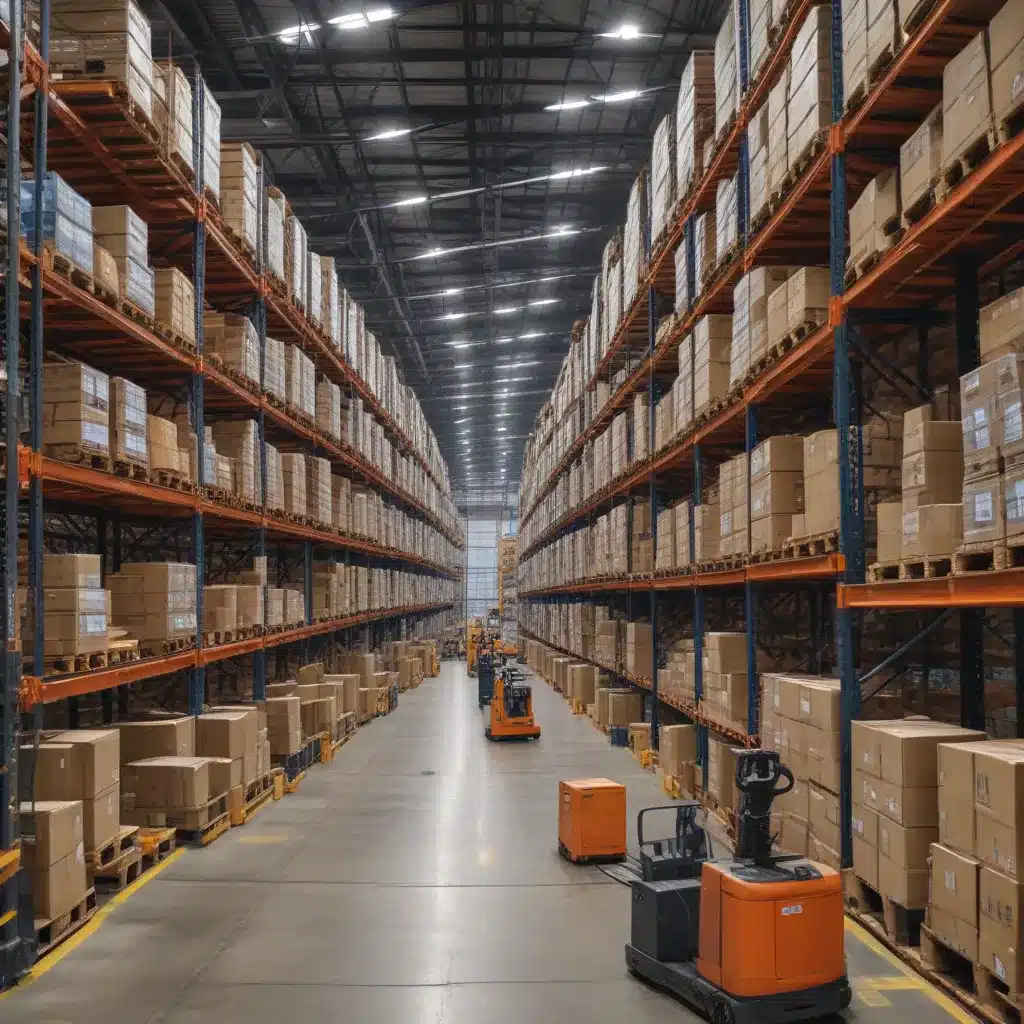
The Evolving Landscape of Supply Chain Management
In today’s rapidly changing business environment, effective supply chain management (SCM) has become a critical competitive advantage for organizations. As the global marketplace becomes increasingly complex, businesses must navigate a maze of challenges, including volatile demand, supply chain disruptions, and heightened customer expectations. To thrive in this dynamic landscape, companies are turning to the power of digital transformation and Enterprise Resource Planning (ERP) systems to enhance supply chain visibility, optimize operations, and drive continuous improvement.
The Rise of Digital Supply Chains
The integration of digital technologies into supply chain processes has revolutionized the way organizations manage their end-to-end operations. This shift, often referred to as “digital supply chains,” has ushered in a new era of enhanced efficiency, real-time visibility, and agility.
Data Integration and Consolidated Insights
At the heart of digital supply chains lies the seamless integration of data from various sources, including suppliers, manufacturers, logistics providers, and customers. By aggregating and analyzing this wealth of information, companies can gain a unified, real-time view of their entire supply chain. Maersk, the global shipping giant, has successfully implemented IoT-enabled container tracking, allowing them to monitor the location, temperature, and condition of goods in transit, improving overall supply chain visibility and responsiveness.
Automation and Optimization
Digital transformation has also enabled the widespread adoption of automation in supply chain processes. From inventory management and order processing to warehouse operations, automated systems and workflows have significantly enhanced efficiency, reduced manual errors, and accelerated key business functions. Walmart, the retail behemoth, has seamlessly integrated its ERP system to coordinate procurement, inventory control, and store replenishment, resulting in improved inventory accuracy and reduced stockouts.
Predictive Analytics and Forecasting
By leveraging advanced analytics and machine learning, companies can now harness the power of predictive insights to optimize their supply chain operations. Amazon, for example, utilizes customer data, order patterns, and market trends to forecast demand accurately, strategically position inventory, and ensure faster delivery times.
The Transformative Role of ERP Systems
Enterprise Resource Planning (ERP) systems have emerged as a crucial enabler of digital supply chain transformation. These integrated software platforms provide a centralized platform to manage and coordinate various aspects of the supply chain, including procurement, inventory management, production planning, and order fulfillment.
Integrated Supply Chain Processes
ERP systems facilitate the integration of disparate supply chain functions, enabling seamless communication and data flow between different departments and partners. This holistic approach allows organizations to optimize resource utilization, improve decision-making, and enhance overall supply chain efficiency. Walmart’s successful implementation of an ERP system is a prime example of how this integration can lead to improved inventory visibility, streamlined transportation, and timely replenishment.
Enhanced Visibility and Traceability
ERP systems, coupled with emerging technologies like RFID and IoT, provide comprehensive visibility into the movement of goods, materials, and information throughout the supply chain. This enhanced traceability enables organizations to identify and address bottlenecks, monitor inventory levels in real-time, and proactively respond to disruptions. Maersk, for instance, has leveraged IoT sensors in its shipping containers to track the location and condition of goods, enabling better risk mitigation and customer satisfaction.
Collaborative Planning and Forecasting
ERP systems often incorporate collaborative planning and forecasting tools that facilitate seamless communication and data sharing among supply chain partners, including suppliers, manufacturers, distributors, and retailers. This collaborative approach to demand planning and inventory management helps organizations improve forecast accuracy, reduce inventory holding costs, and enhance overall supply chain responsiveness. Procter & Gamble (P&G) has successfully implemented a collaborative planning and forecasting system, enabling real-time data sharing with its retailers, which has led to better inventory management and customer satisfaction.
Embracing Supply Chain Optimization with Digital Transformation and ERP
The integration of digital technologies and ERP systems has revolutionized the way organizations manage their supply chains, offering numerous benefits:
-
Increased Efficiency: Automation, real-time visibility, and data-driven decision-making have streamlined supply chain processes, reducing manual errors and improving overall productivity.
-
Enhanced Visibility and Traceability: Comprehensive tracking of goods, materials, and information across the supply chain has enabled organizations to identify and address issues proactively, minimizing disruptions and ensuring timely delivery.
-
Improved Forecasting and Inventory Management: Advanced analytics and collaborative planning have enhanced demand forecasting accuracy, allowing companies to optimize inventory levels and minimize stockouts.
-
Stronger Supplier Collaboration: Effective communication and data sharing among supply chain partners have fostered greater transparency, enabling better coordination and responsiveness to changing market conditions.
-
Reduced Costs: Optimized transportation routes, inventory levels, and resource utilization have resulted in significant cost savings for organizations.
-
Enhanced Customer Experience: Improved visibility, faster delivery times, and more accurate order tracking have contributed to increased customer satisfaction and loyalty.
As businesses navigate the ever-evolving landscape of supply chain management, embracing digital transformation and ERP systems has become a strategic imperative. By leveraging these powerful tools, organizations can enhance supply chain visibility, drive continuous optimization, and stay ahead of the competition in the digital age.
Conclusion
In the fast-paced and interconnected world of modern business, supply chain management has emerged as a crucial competitive differentiator. By harnessing the power of digital transformation and ERP systems, organizations can unlock a new era of supply chain visibility, optimization, and resilience. From enhanced data integration and predictive analytics to collaborative planning and responsive logistics, the benefits of this digital-driven approach are undeniable.
As you embark on your own supply chain transformation journey, IT Fix is here to provide the practical insights, expert guidance, and innovative solutions you need to succeed. Connect with our team of seasoned IT professionals to explore how digital technologies and ERP can unlock new levels of supply chain efficiency and agility for your organization.












